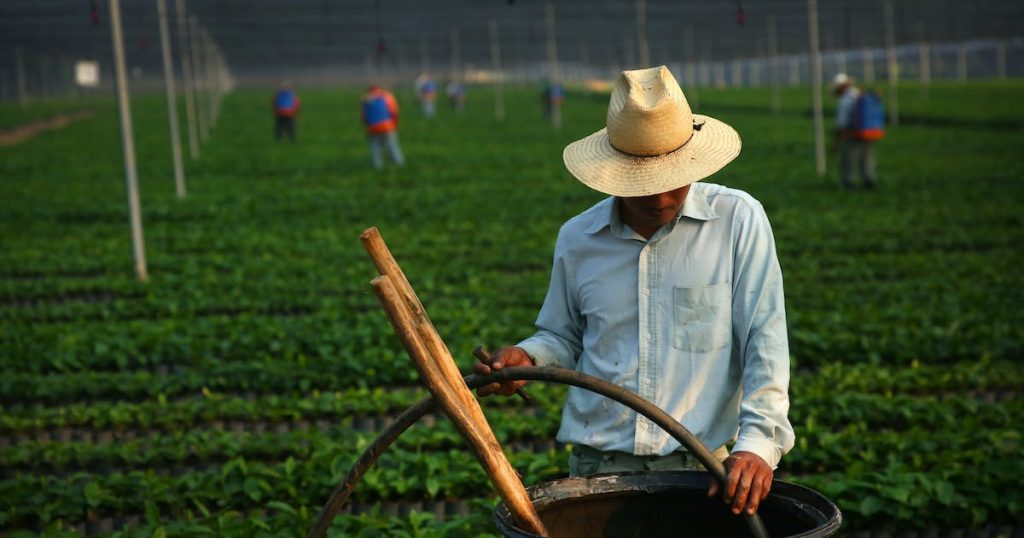The trees protecting your coffee — and the farmers who grow it
3 min read
Editor’s note: In celebration of National Coffee Day on September 29, Starbucks and Conservation International (CI) are continuing their “One Tree for Every Bag Commitment” for the second year. Starbucks will contribute 70 cents — the cost of a new coffee tree — to CI for every bag of coffee sold at participating stores in the U.S., and CI will make grants to seedling nurseries that will provide coffee trees directly to farmers in Mexico, El Salvador and Guatemala. To date, over 18 million trees have been purchased for the program. The disease-resistant trees support farmers whose coffee farms are struggling with the impacts of changing weather patterns, pests and disease outbreaks, and aging trees that have declining yields. CI’s director of sustainable coffee markets, Raina Lang, recently took a trip with Starbucks’ head of agronomy, Carlos Mario Rodriguez, to one of the coffee tree nurseries servicing the program in Chiapas, Mexico.
Coffee is the world’s most traded tropical agricultural product, and growing it takes up a serious chunk of land: roughly 11 million hectares (more than 27 million acres, an area of land about the size of Cuba) over 50 countries.
Renovation — replacing old trees with new ones — is one important way to protect farms from the impacts of climate change and disease and pest outbreaks, especially when using rust-resistant varieties. However, replanting projects can have unanticipated impacts on forest conservation. For example, if farmers cut down old growth or shade trees in addition to replacing non-productive coffee trees, the consequence of deforestation and loss of forest connectivity can lead to deterioration of water resources and biodiversity. CI and Starbucks have implemented three safeguards to ensure this does not occur — farmers must agree not to plant the new coffee seedlings in natural forest areas; they must maintain any existing native shade tree species unless they compete significantly with the coffee trees; and they must enter into the program voluntarily.
During a recent trip to Mexico, El Salvador and Guatemala, CI and Starbucks staff visited six of the 10 coffee tree nurseries in the “One Tree for Every Bag Commitment” program to verify the health of the trees, confirm they were rust-resistant varieties, and ensure that suppliers understood the program’s safeguards. Across the 10 participating nurseries, nearly 800 seasonal and long-term jobs have been created because of the commitment.
As demand for coffee grows forests risk being torn down, increasing the footprint of coffee. To avoid this expansion, there is an urgent need to focus on sustainable production that increases productivity and resilience to climate change on existing farms.
Further reading
Roughly 120 million people rely on the coffee economy for their livelihoods. Coffee farmers and workers at all stages of coffee production depend on the trade to support their families. In recognition of the role coffee plays in the lives and livelihoods of so many families, Conservation International and Starbucks worked together to develop the Coffee and Farmer Equity (C.A.F.E.) Practices program in the late 1990s. To date, coffee producers from 25 countries have participated in the program, improving the incomes of more than one million farmers and farm workers. Participating farms have designated 121,000 hectares (almost 300,000 acres) in any given year for conservation purposes.
Throughout Starbucks and CI’s 15-year partnership, CI has helped the coffee retail giant verify 99 percent of Starbucks’ coffee as ethically sourced. The “One Tree for Every Bag Commitment” is the next step in Starbuck’s continued commitment to the future of sustainable coffee — promoting crop renovation that helps farmers increase coffee yields and income over time.
Raina Lang is CI’s director of sustainable coffee markets.
Want to read more stories like this? Sign up for email updates. Donate to Conservation International.





